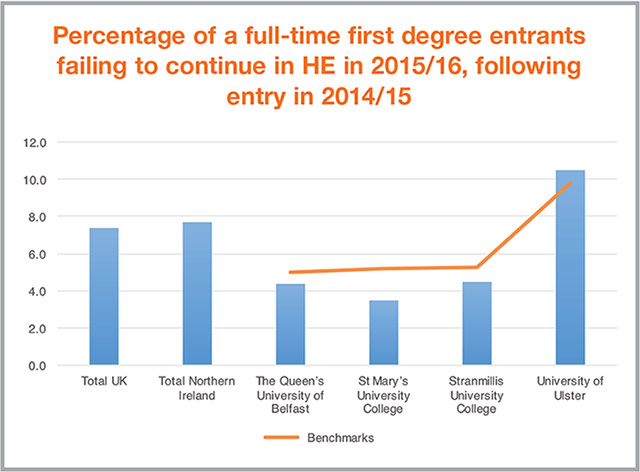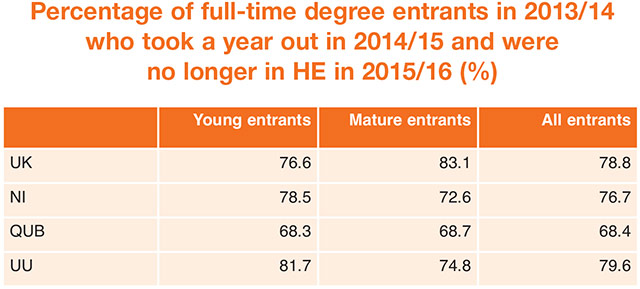Higher education retention and participation


Between 2014/15 to 2016/17 the dropout rate for higher education in Northern Ireland was almost 8 per cent. agendaNi looks at the latest performance indicators.
Of those who entered higher education in 2014/15, 7.7 per cent were no longer involved in 2015/16. In terms of a breakdown of higher education institutions Queens University Belfast (4.4 per cent), St Mary’s (3.5 per cent) and Stranmillis (4.5 per cent) all out-performed their benchmarks but Ulster University had a higher non-continuation rate than its benchmark.
The non-continuation rate for young full-time first degree students was 5.3 per cent, lower than the UK average of 6.2 per cent but the percentage of mature full-time first degree students (15 per cent) dropping out was significantly higher than the 11.7 per cent UK average.
Year out
More than three quarters (76.7 per cent) of all full-time first degree entrants to Northern Ireland’s higher education institutions in 2013/14, who took a year out in 2014/15, did not return to higher education the following year.
Only QUB and UU had enough of the category of students to be deemed eligible for data collection but findings show that 68.4 per cent of QUB full-time first degree entrants matching the category did not return, compared to 79.6 per cent at UU.
In terms of projection, Northern Ireland higher education institutions were projected to help 84.3 per cent of students who started a first degree course in 2014/15 attain a degree, better than the UK average rate of 80.8 per cent.
Participation
Compared with the UK average (6.8 per cent) of full-time undergraduates in receipt of Disability Living Allowance (DLA), Northern Ireland’s higher education institutions performed lower with a rate of 5.3 per cent.
QUB and St Mary’s performed above their benchmarks with 6.8 per cent and 6.2 per cent respectively, however Stranmillis and Ulster University fell below their benchmarks with 4.1 per cent and 4 per cent respectively. For part-time undergraduates, the higher education institutions were performing slightly higher than the UK average of 3.5 per cent, with 3.9 per cent in receipt of DLA.






